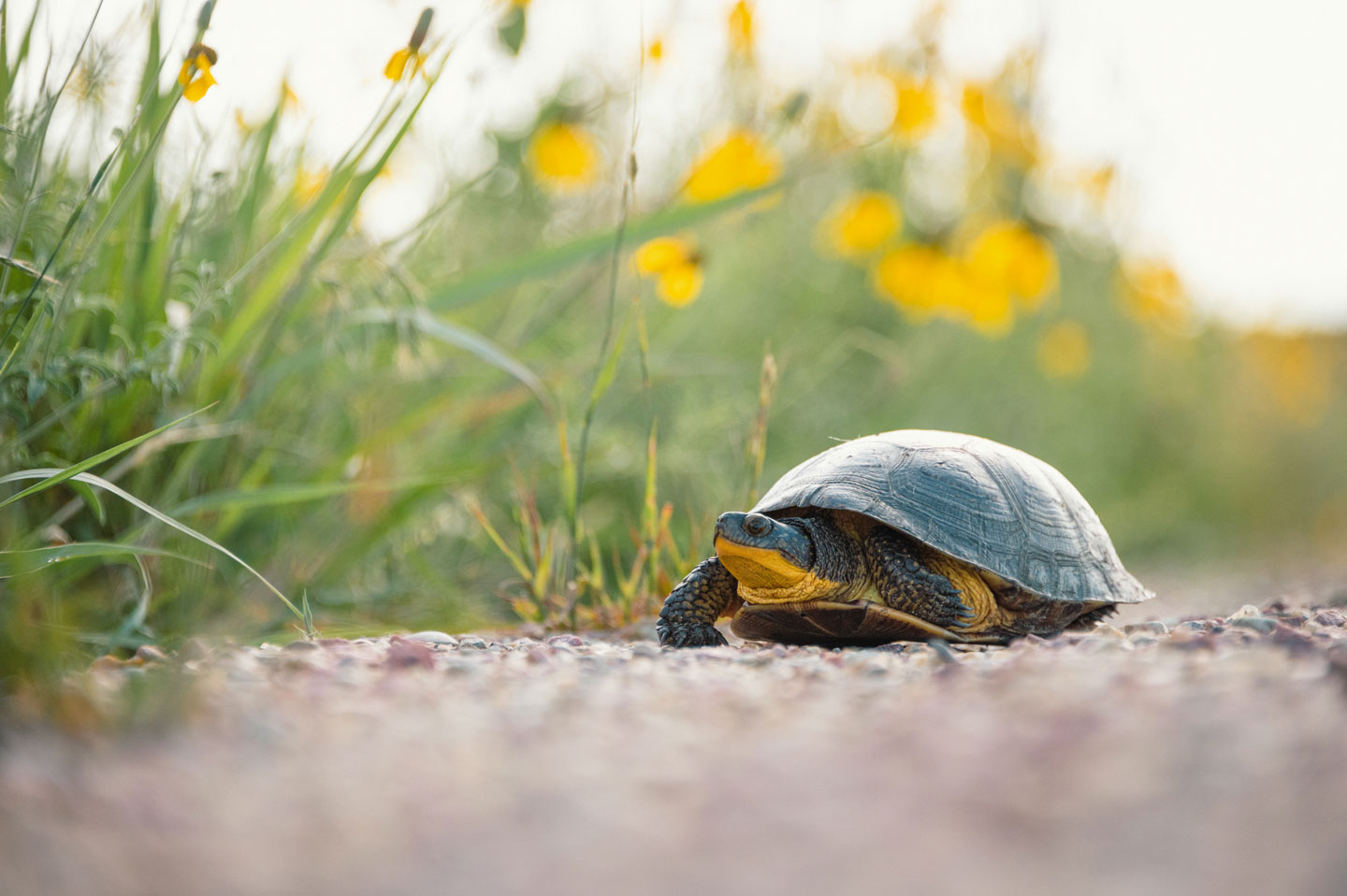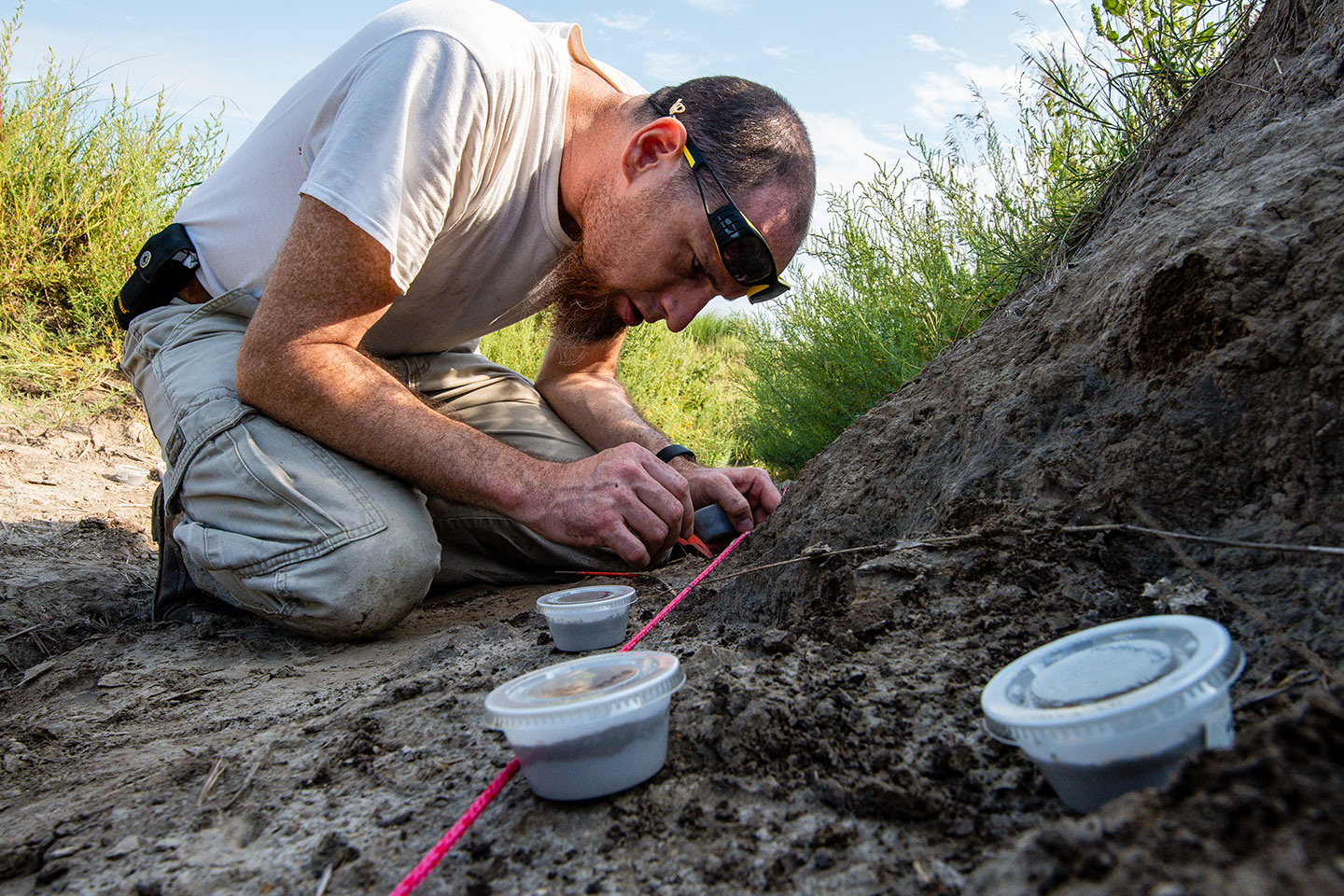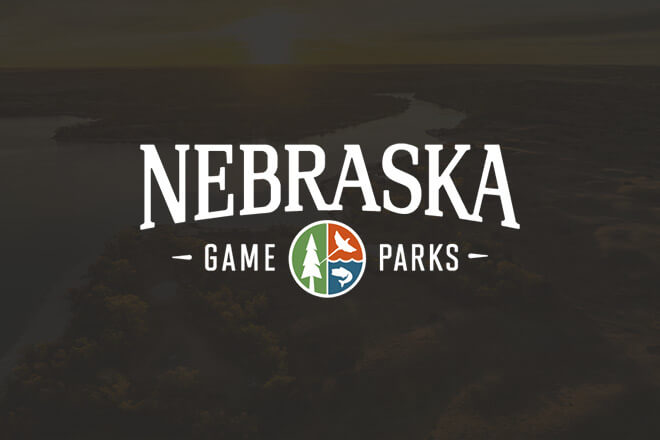American burying beetle
Status: Endangered
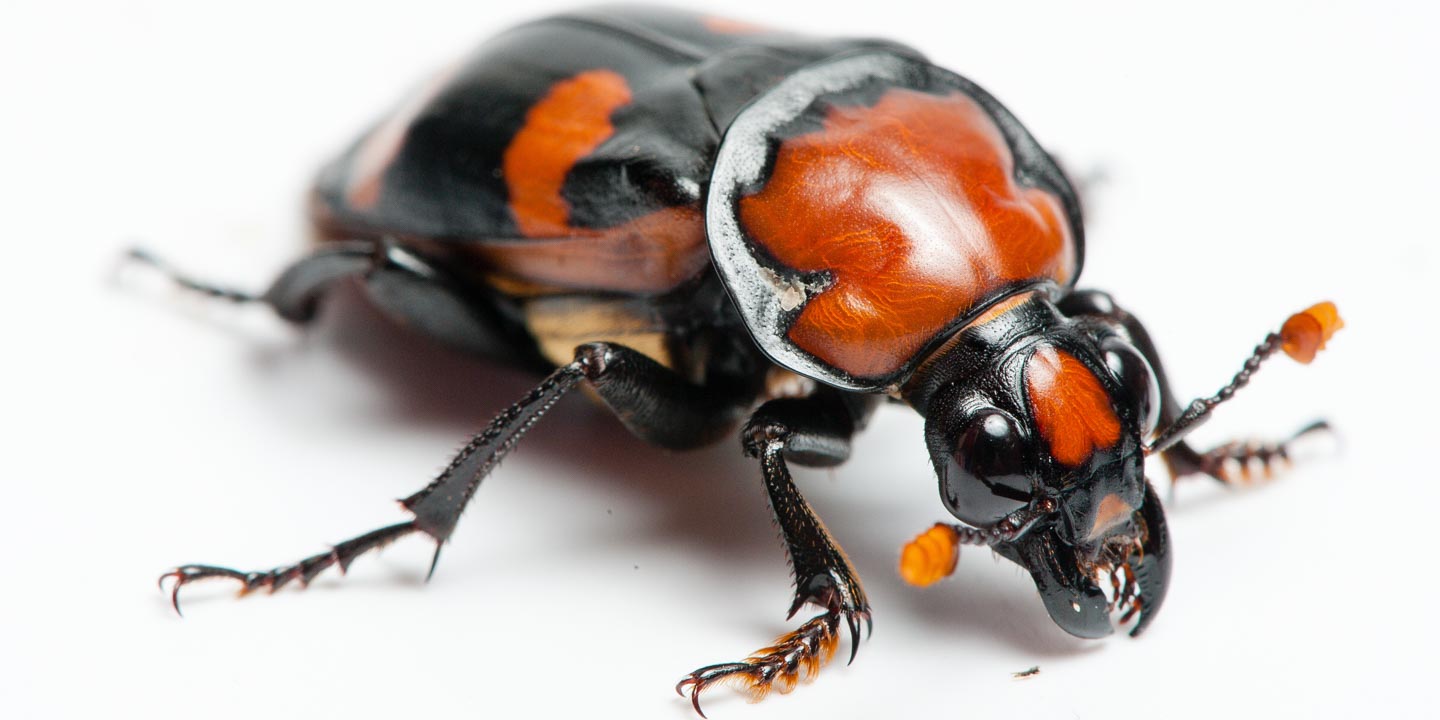
Reaching lengths of up to 2 inches, the American burying beetle (Nicrophorus americanus) is the largest member of the Silphidae Family (also known as carrion beetles) in North America. They are called carrion beetles because they use dead animals – carrion – for food and reproduction. By feeding and laying eggs on dead animals, carrion beetles provide an important ecological service as they help “recycle” nutrients from dead animals back into the ecosystem.
American burying beetles are shiny black and orange in color. They are easily identified by the orange spots on its wing covers, which is common on other burying beetles, and the large orange spot on the pronotum (the hard shell-like covering just behind the head), which is not found on any other carrion beetle. The American burying beetle also has an orange spot on its head between the eyes. Each antenna has large orange segments that form a ball at the tip.
These beetles are active at night and spend much of their time searching for carrion. After flying to the dead animal, the beetles drop to the ground and immediately begin burying the carcass. By burying the carcass, the beetles are removing it from competition with other carrion beetles and scavengers.
Range
The historic range of the American burying beetle extended over most of the eastern and central United States and into southeastern Canada. American burying beetle have been extirpated, or eliminated from nearly 90 percent of their original range. The range now includes small, individual populations in only 6 states. In Nebraska, the Sandhills are an important stronghold for the species, as is a small area located in the Loess Canyons southeast of North Platte.
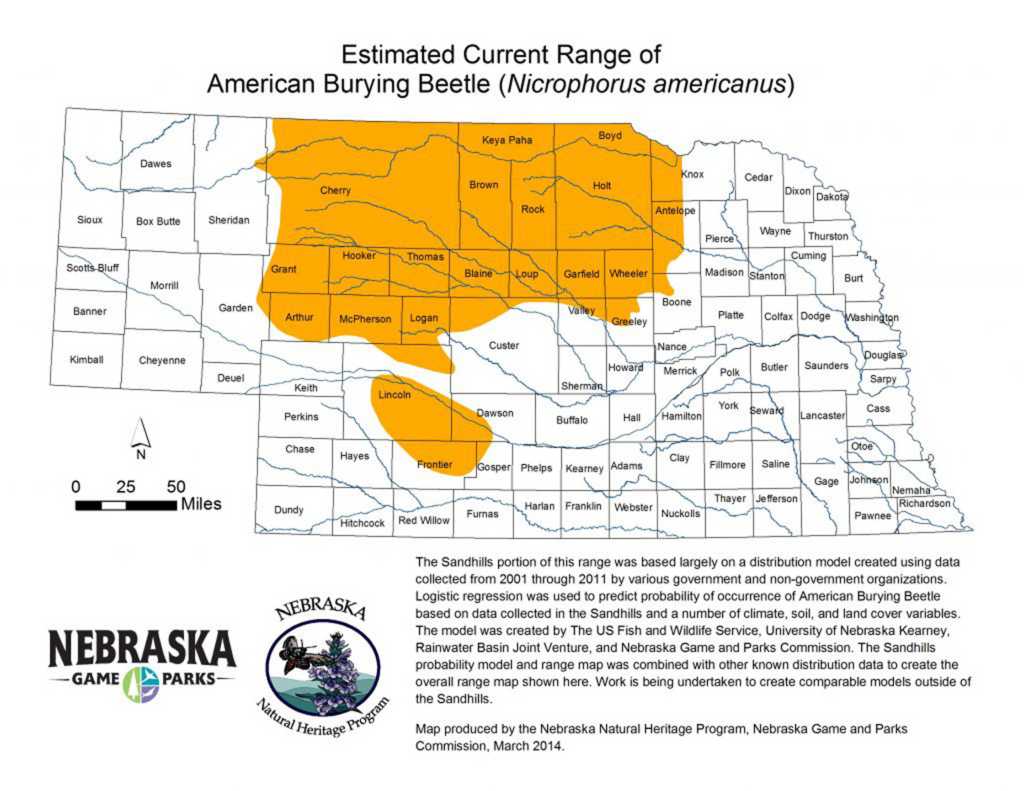
Habitat
The American burying beetle can be found in a wide variety of habitats ranging from open woodlands to grasslands. The habitat requirements of the American burying beetle are not completely understood, but they seem to prefer large, intact areas with little or no human disturbance. The more important criteria for habitat is the availability of carrion. Also important is the soil type that allows the beetle to bury animal carcasses. In Nebraska, the American burying beetle can be found in prairies, open woodlands, scrubland and forest edge.
Diet
American burying beetles feed upon dead animals, including birds, fish, mammals and other organisms. Specialized organs on the tip of their antennae help the beetles find dead animals. They are capable of detecting a dead mouse only hours after it died, and can detect carrion from up to 2 miles away.
Reproduction
Adult beetles become active in early summer. Using smell organs located on their antennae, beetles locate carcasses to either feed for nutrition or assess for reproduction. If the carcass is of appropriate size, males and females will then select a mate. If more than one pair find the same carcass, a battle ensues until there is only one pair remaining. The victorious pair then work together to move the carcass to an appropriate location where the substrate (soil) is soft enough to bury the carcass. The pair then begins removing the soil from under the carcass thus situating the carcass in a shallow depression. The carcass is then completely buried by the beetles. Once buried, the parental pair secretes a saliva-like substance onto the carcass to slow the decomposition. The female proceeds to lay 10-30 eggs in a small, underground chamber above the carcass.
Once the larvae emerge, they begin feeding on the carcass. Young receive parental care for their entire time they are feeding and growing. Parental care such as this is extremely rare in insect species; it is typically found only in bees, wasps, and ant species.
The young completely consume the carcass in about a week. After two weeks, both parents return to the surface and leave the area. The young remain underground to pupate (develop) in the nearby soil and emerge as adults approximately one month later.
Population status
Reports of a decline in population numbers were first recorded as early as the 1880s. By the mid-1920s, the American burying beetle was nearly eliminated from areas east of the Appalachian Mountains. The decline west of the Appalachian Mountains occurred later.
Originally found in 35 states and Canada, this beetle is now found only in Nebraska, Rhode Island, Oklahoma, South Dakota, Kansas and Arkansas. In 1988, it was listed as a candidate species on the U.S. Fish and Wildlife Service Endangered Species List; it was officially listed as endangered in August 1989.
Some reintroduction efforts have been attempted in Ohio and Massachusetts with limited success.
Management and outlook
The American burying beetle does well in undisturbed areas. As human populations have grown, the vast expanses of undisturbed areas have decreased. This habitat fragmentation causes more areas of habitat edge, and thus an increase in scavenger species including raccoons, opossums, foxes, skunks, and crows. Because carrion beetles, such as the American burying beetle use dead animals for both food and to raise young, an increase in scavenger species causes a decline in the amount of small prey (carrion) animals available for carrion beetles to use.
There are several other likely causes of the decline in American burying beetle populations. An increase in light pollution most likely has had some effect on the nocturnal species; although the exact amount of effect this has had on the beetle is unknown.
One of the primary recovery plan actions for this beetle is to complete annual surveys. Several methods for trapping and marking the beetles exist. In Nebraska, the trap consists of a 5-gallon bucket with bait (carrion) placed in the bottom. Many different species of burying beetles often are trapped in one night. The American burying beetles are marked with a small colored and numbered tag.
Other means of conservation include protecting the species from future human developments. This involves practices to avoid and reduce beetle morality and disturbance. Additional conservation measures include conservation easements and proper habitat management.
Conservation help
Care should be taken to divert developments in areas known to have American burying beetles. Additionally, landowners should report sightings of American burying beetles to the Nebraska Game and Parks Commission at 402-471-0641.
References
Species Profile: American Burying Beetle. 2012. U.S. Fish & Wildlife Service. Website: http://ecos.fws.gov/speciesProfile/profile/speciesProfile.action?spcode=I028.
Nebraska Department of Roads American Burying Beetle Research Final Report. W. Wyatt Hoback, University of Nebraska at Kearney
Ratcliffe, B. C. 1997. Endangered American burying beetle update. http://www.museum.unl.edu/research/entomology/endanger.htm.
U.S. Fish and Wildlife Service. 1991. American Burying Beetle (Nicrophorus americanus) Recovery Plan. Newton Corner, Massachusetts. 80 pp.
Copyright 2013. Published by the Nebraska Game & Parks Commission with funds from the Nebraska Environmental Trust.
NOTE: New data of the occurrence and distribution of this species are being collected constantly and some of the information in the pamphlet may be outdated. The information in this pamphlet should be used for a general understanding of the species and not as the sole source of range location for any report, project, regional or local planning, or for environmental impact assessments. For current information on this species, please contact the Nebraska Game & Parks Commission, Wildlife Division.

